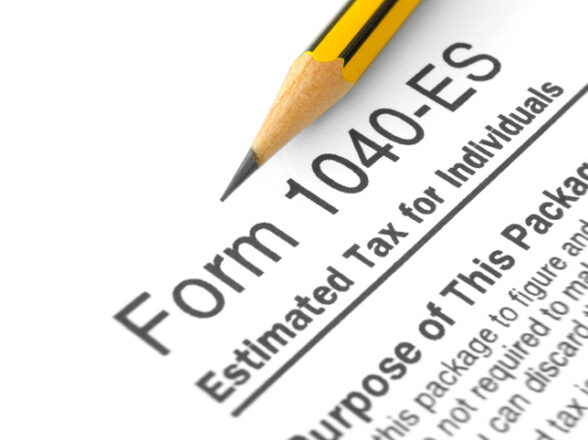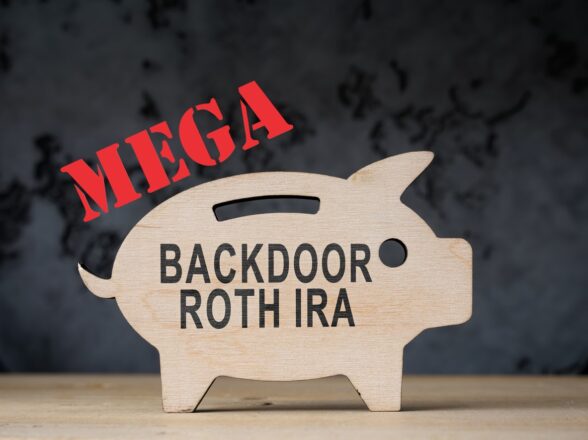Blog
How to Save Taxes with the Net Unrealized Appreciation Strategy

One of the big advantages that employees of public companies have is the ability to accumulate shares of stock in the company for which they work. If you are fortunate enough to have company stock inside of your retirement plan (usually the 401k plan), then you might have an additional tax benefit of using Net Unrealized Appreciation to further optimize your retirement years.
If an employee retires or leaves their job and they own stock in the employer company inside of the 401k, they can deal with the stock in two ways:
- Roll the assets over to an individual retirement account (IRA),
- Distribute the stock into a taxable account.
The first approach allows you to set aside funds for retirement and potentially save taxes. But the retirement distributions will be taxed at your ordinary tax rate, which is higher than the long-term capital gains tax rate.
It also may not be available depending on whether there are in-kind IRA accounts that match your employer account. That is why most employers prefer liquidating the stock and sending you the check or transferring it to your IRA of choice.
The second option gives rise to the Net Unrealized Appreciation strategy, which allows your distributions to be taxed at the more favorable capital gains rate, leading to tax savings.
The Net Unrealized Appreciation (NUA) Strategy
To fully grasp the NUA strategy, you need to understand three things about shares: cost basis, net unrealized appreciation, and additional appreciation.
Cost Basis: The original value or purchase price of an investment or asset for tax purposes. In this context, the cost basis is the value of the shares when the employee acquired them.
Net Unrealized Appreciation: The difference in value between the current market value and the cost basis of the shares. For example, if the cost basis of the employee shares is $30.00 and the current market value of the shares is $50.00, the NUA would be $20.00.
Additional Appreciation: The additional rise in the value of the stock after distribution. More on this later.
When the employee takes a lump sum distribution of all the assets in the employer-sponsored retirement plan account upon retirement or when they leave the job, the pretax portion of the cost basis of the stock is taxable as ordinary income.
Note that if they take the distributions when they’re less than 59.5 years old, they may be subject to a 10% early distribution penalty. The income tax is paid immediately.
If the stock has risen in value, it has a net unrealized appreciation. The individual can elect to defer the NUA taxes until they liquidate the stock. When they liquidate it, the NUA is taxed at the long-term capital gains rate, regardless of how long you wait to liquidate after distributions.
The NUA is not subject to the 10% early withdrawal penalty, even if the individual is less than 59.5 years old.
After distribution, the stock may continue to increase in price, giving rise to additional appreciation. This additional appreciation is taxed at the long- or short-term capital gains rate, depending on how long the shares are held after distribution. If the individual holds the shares for less than a year, they are taxed at short-term capital gains rates. If the individual holds them for more than a year, they qualify for the long-term capital gains tax rate.
Like the NUA, the additional distribution is not subject to the 10% early withdrawal penalty.
Net Unrealized Appreciation Example in Taxes
Meet Mike, a 62-year-old, married, and long-serving employee of Company X. His 401(k) is worth $2,000,000, with $500,000 invested in Company X stock. Due to Company X’s IPO, the stock was highly appreciated, and the cost basis of his stock is only $150,000.
Once he retires or leaves Company X, he can either roll over the assets to an IRA or execute the NUA strategy.
Executing the NUA strategy
Mike takes the lumpsum in-kind distribution of the company stock into his brokerage account and directly rolls over the balance of $1.5M to his IRA, which has no tax consequences on his distribution. He pays ordinary income tax on the $150,000 cost basis. He falls in the 24% income tax bracket as of 2022.
Assuming he decides to liquidate the investment in the same year, he pays long-term capital gains tax on the net unrealized gains of $350,000 at a rate of 15%. Add the 2022 Medicare surtax rate of 2.9% for a total tax rate of 17.9%.
Without going into the calculations, he pays $92,485.5 in taxes.
Rolling over the assets to an IRA
If Mike rolls the full amount in his account into an IRA and takes the $500,000 distribution, the distribution will be taxed as ordinary income at a tax rate of 35%. Add the Medicare surtax rate of 2.9%, and the total tax rate is 37.9%.
Without going into the calculations, he pays a tax rate of $132,650.
If Mike lives in a state with income or capital gains tax, there could be additional tax implications, but it’s clear that the NUA strategy leads to tax savings.
Requirements for the NUA Strategy in Taxes
To enjoy the favorable tax treatment of the NUA strategy, you have to qualify by meeting a few requirements:
- You have to be eligible to take a lumpsum distribution from your plan. Eligibility is brought by reaching 59.5 years old, separation from employment, disability, or death. In some circumstances, however, distributions taken because you’ve reached 59.5 years old are not considered lumpsum distributions.
- After meeting the eligibility above, you must take a lumpsum distribution from the account.
- You must distribute the entirety of the balance held in the plan in the year of the NUA.
- The distribution must be in kind. You must transfer it directly to a taxable investment account, not liquidate it and then use it to purchase stock.
- The stock must be in a tax-deferred retirement account. Tax-exempt vehicles like Roth IRAs don’t qualify.
- You must have received the company stock directly from your workplace plan. The strategy cannot work for stock rolled over to an IRA and then liquidated.
Is the NUA Strategy Right for You?
Despite being an effective tax-saving strategy, it is not right for all scenarios. Consider the following few factors to determine whether it is right for you and to maximize the effectiveness of the strategy’s tax treatment.
Age
The number of years left before retirement determine how beneficial the strategy will be to you. It may not be beneficial for you if you are young and have many years left before retirement. The investment keeps growing, and when you liquidate it, the growth will push you to higher capital gains tax rates, beating the purpose of the strategy.
It may not be the right strategy for you if you’re young. Wait until you have a few years left until retirement to make the strategy more beneficial.
Current and future tax rates
The strategy is a great choice if your financial advisor projects your ordinary income tax rate to be higher than long-term capital gains rates when you plan to take the distributions from the accounts. This is because the net unrealized appreciation will be taxed at the lower long-term capital gains rate, leading to more tax savings.
The risk
If you elect to hold your financial assets in the form of stock for growth and more tax savings, you have to consider the investment risk. Things don’t always go as planned.
Benefits of the NUA Strategy in Taxes
The NUA strategy has the following potential benefits:
1. Tax savings
The primary benefit of the NUA strategy is the ability to lower your tax rate significantly by subjecting you to the lower long-term capital gains rate instead of the ordinary income rate.
2. Reduces required minimum distributions
Required minimum distributions are the minimum distributions that everyone is required to make from a retirement account after reaching 72 years old. The amount is calculated based on the amount in your account.
The NUA strategy reduces the amount of money in your IRA, which reduces your RMDs. Lower RMDs mean lower taxes, as well.
3. Flexibility
The NUA strategy has no holding period requirements. So, you can sell the stock whenever you want.
4. Charitable goals
You can use the stock in your NUA strategy to donate if you have any charitable goals. If you do that, you could receive a significant tax deduction based on the value of the stock donated.
5. It prevents early withdrawal penalties
You can use the NUA strategy to prevent early withdrawal penalties because it is not subject to them. The pretax portion of the cost basis of the stock is subject to it, though.
Downsides of the NUA Strategy
The downsides of the NUA strategy include:
- If you execute the NUA strategy, the ordinary income tax based on the cost basis of the stock is paid immediately. If you don’t execute it, the ordinary income taxes wouldn’t be due until you sell the shares in the future.
- Unlike most taxable assets, NUA has no step-up in basis if inherited after death. Instead, the NUA is treated as ordinary income.
- Concentration risk is very high as most individuals hold stock in one company.
- You could pay more tax if your tax bracket is lower during distribution than when you elect the NUA strategy.
Should You Execute the NUA Strategy?
It depends. The above clearly shows that the NUA strategy can be a very effective tax-saving tool. In the same way, there are many situations where it doesn’t make sense to use the strategy. It can either lead to significant tax savings or losses. Therefore, it’s best to discuss with your own financial advisor before making any investment decision.






















































































































